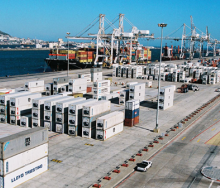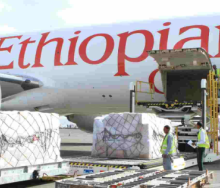Poultry price increases are expected to ease after experiencing double-digit hikes over the past two years.
This is according to the latest Absa AgriTrends Report, which forecasts that a stronger rand and robust growth in production by key global suppliers such as Brazil, could see the average price of some categories of chicken products increase by just over 1% in 2024.
Absa AgriBusiness senior economist Marlene Louw said, in recent times the outbreak of diseases like Avian influenza had caused a global shortage of poultry, which has put upward pressure on prices.
“While potential new disease outbreaks may change the price outlook going forward, all things being equal, we expect that lower feed prices will improve margins for producers, which could stimulate supply,” said Louw.
“This could in turn assist in keeping price increases contained over the medium term, which is good news for consumers.”
Louw said chicken accounted for roughly two-thirds of meat consumed in South Africa and about 20% of local consumption was serviced through imports – mostly frozen bone-in portions. This means any supply interruption could have a meaningful impact on price movements.
In July this year, Brazil experienced a case of New Castle disease and although it was an isolated incident, trade was suspended for 21 days.
“With around 400 000 tonnes of chicken being exported out of Brazil each month, the event highlighted the importance of Brazil as a key exporter servicing the global market,” said Louw.
“South Africa is especially vulnerable to export disruptions out of Brazil. In 2023, more than three-quarters of chicken imports to South Africa, came from the southern American agricultural giant.”
There have been growing calls for chicken pieces to be zero-rated for value added tax.
However, Louw said while the importance of food affordability was acknowledged, it was vital to note that a change of this nature could have unintended consequences.
For example, price changes of products are likely to alter consumption patterns, which could impact prices and margins of other meat products.
Louw added that policies that supported and enabled efficient broiler production, such as effective and agile disease management and sound service delivery, would also limit price increases of chicken products.
This would likely have a less distortive effect on relative prices and margins and contribute to providing consumers with price relief.
Average chicken prices (2021-2023) and price forecasts (2024-2027)
|
|
Frozen Whole Bird (R/kg) |
Fresh Whole Bird (R/kg) |
IQF (R/kg) |
|
2021 |
29.22 |
29.66 |
25.4 |
|
2022 |
32.3 |
32.6 |
29 |
|
2023 |
35.79 |
35.71 |
30.8 |
|
2024 |
36.20 |
35.30 |
31.15 |
|
2025 |
37.58 |
36.54 |
32.02 |
|
2026 |
39.00 |
37.52 |
32.82 |
|
2027 |
39.78 |
38.12 |
33.15 |
Source: Absa AgriBusiness, 2024













